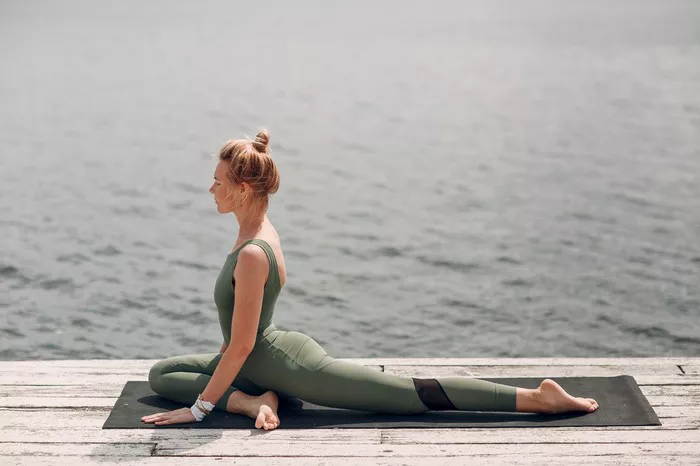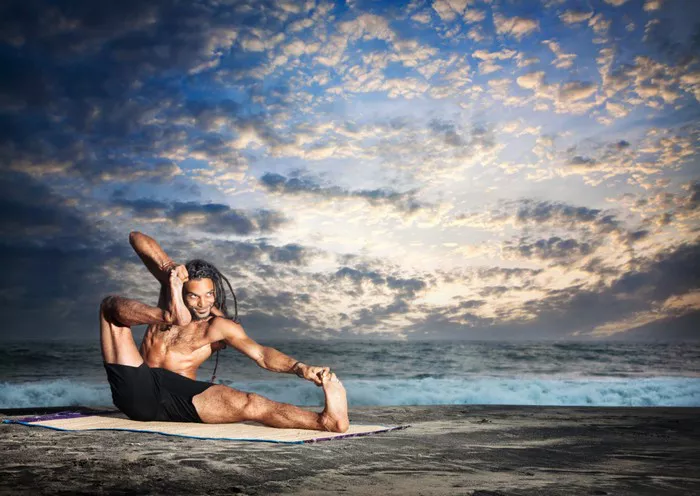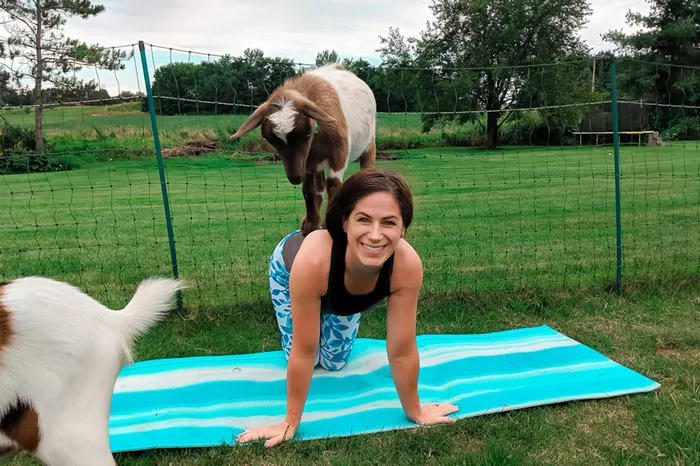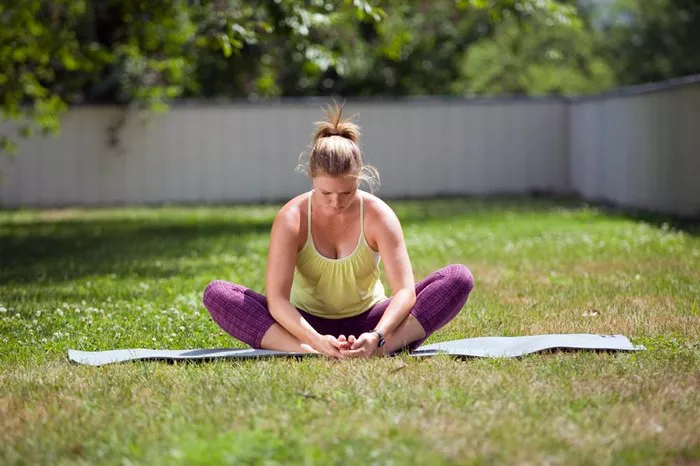Yoga, an ancient practice with roots in India, is much more than just a physical exercise. It is a holistic approach to health that aims to integrate the body, mind, and spirit. Among the many poses in yoga, one of the most fundamental and widely practiced is the Mountain Pose, or Tadasana in Sanskrit. Though it may appear simple at first glance, this posture offers a wealth of benefits, both physical and mental. It is the foundation from which other poses flow, providing stability and balance, and is often considered the cornerstone of many yoga sequences. But what is the true purpose of Mountain Pose? How does it affect the body and mind? This article will explore the significance of the Mountain Pose in yoga, its benefits, alignment tips, and how to practice it effectively.
What is the Mountain Pose?
Mountain Pose, or Tadasana, is a standing posture that involves standing tall with feet together, weight evenly distributed on both feet, legs active, spine lengthened, chest open, and arms by the sides. Despite its simple appearance, Mountain Pose is a powerful posture that serves as a neutral stance for many other standing poses in yoga. It is considered the most basic standing pose in yoga because it teaches alignment, balance, and awareness of the body.
In Sanskrit, “Tada” means “mountain,” and “Asana” means “pose.” The name reflects the stability and grounded nature of the pose, which is similar to the immovability and strength of a mountain. The purpose of Mountain Pose goes beyond just physical alignment—it is a symbol of the stability and rootedness we seek in our lives, and it can cultivate a deep sense of mindfulness and presence.
The Benefits of Mountain Pose
Although the Mountain Pose may seem simple, it offers a wide range of physical, mental, and emotional benefits. Here are some of the key advantages of incorporating Tadasana into your yoga practice:
1. Improves Posture
One of the most immediate and noticeable benefits of Mountain Pose is improved posture. Tadasana encourages proper spinal alignment by promoting an even distribution of body weight. The position of the feet, legs, pelvis, and torso work together to help you stand upright with ease and balance. As you engage in the pose, your body learns to naturally align itself, creating a more balanced posture throughout the day. This can lead to a reduction in the discomfort often associated with poor posture, such as back and neck pain.
2. Increases Body Awareness
Mountain Pose is a great way to develop a deeper sense of body awareness. In this pose, every part of your body needs to be activated and engaged, from the soles of your feet to the crown of your head. Through mindful attention to the alignment of your body and the distribution of your weight, you develop a stronger connection to the physical sensations within your body. This heightened awareness extends beyond the mat, helping you to be more mindful in everyday activities.
3. Strengthens the Legs and Core
While Tadasana may look deceptively easy, it requires strength and stability, particularly in the legs and core. In order to hold the pose effectively, you must engage the quadriceps, calves, and thighs. Additionally, by drawing the lower belly in and up toward the spine, you engage the abdominal muscles, which strengthens the core. Over time, consistent practice of Mountain Pose will build endurance and muscular strength in these areas.
4. Enhances Balance and Stability
Mountain Pose is an excellent way to enhance balance and stability. By standing with both feet grounded and evenly spaced, you activate the muscles that are responsible for balance. This helps to improve your overall stability and proprioception, which is your awareness of where your body is in space. When combined with deep breathing and mindfulness, Tadasana also enhances mental focus and concentration, further contributing to your sense of balance.
5. Promotes Better Breathing
Mountain Pose helps to create space in the body, particularly in the chest and lungs. By standing tall with an open chest and lengthened spine, you allow for a greater expansion of the rib cage. This encourages deep, diaphragmatic breathing, which helps improve lung capacity and oxygenates the body more efficiently. As you focus on your breath, you cultivate a sense of calm and relaxation that can help reduce stress and anxiety.
6. Boosts Energy and Vitality
Because Tadasana is a posture that involves activating the entire body, it can be energizing. The deep engagement of muscles, combined with controlled breathing, stimulates the body’s energy channels, promoting a feeling of vitality. Whether you practice it first thing in the morning or as a break during a long day, Mountain Pose can give you a mental and physical boost.
7. Encourages Mindfulness and Presence
Yoga is as much a mental practice as it is a physical one. Mountain Pose encourages you to cultivate mindfulness by bringing your attention to the present moment. When you focus on your breath, alignment, and body sensations in Tadasana, you practice being fully present. This mindfulness can be carried over into other aspects of your life, helping you remain grounded, calm, and centered in the midst of everyday challenges.
The Role of Mountain Pose in Yoga Sequences
Mountain Pose serves as a foundation for a variety of other standing and balancing poses. It is typically used as a starting point and a transition pose between more complex asanas. For instance, it is often a part of the sun salutation sequence (Surya Namaskar), where it is used as a grounding posture between forward bends, backbends, and lunges. Many other poses, such as Warrior I (Virabhadrasana I), Warrior II (Virabhadrasana II), and Tree Pose (Vrksasana), begin from Tadasana or flow into it.
The reason Mountain Pose is so crucial is because it teaches proper alignment, which ensures that subsequent poses are executed safely and effectively. When you start a sequence with Tadasana, your body is better prepared to handle more challenging postures. Additionally, it helps to develop the strength and flexibility required to maintain proper alignment as you move through more dynamic sequences.
Correct Alignment in Mountain Pose
While Tadasana may seem simple, proper alignment is key to maximizing its benefits. Here are some tips on how to achieve correct alignment in Mountain Pose:
Feet Placement:
- Stand with your feet hip-width apart, with the inner edges of your feet parallel.
- Distribute your weight evenly between the front and back of your feet, as well as between the inner and outer edges.
- Press firmly into the ground with the balls and heels of your feet, while engaging your leg muscles to lift your kneecaps upward.
Legs and Hips:
- Engage your quadriceps and lift your kneecaps.
- Gently draw your pelvic floor up, and avoid letting the hips tilt forward excessively. Instead, maintain a neutral pelvis.
- Slightly engage the glutes, but avoid clenching them.
Torso and Spine:
- Lengthen your spine by imagining a string pulling you up from the crown of your head.
- Keep the shoulders relaxed and away from your ears.
- Open the chest slightly, without forcing it, to create space for the lungs.
- Draw your lower belly in toward your spine to engage your core muscles.
Arms and Hands:
- Allow your arms to rest by your sides, with your palms facing forward or inward.
- Spread your fingers wide, but keep the hands relaxed.
- Elongate your arms toward the ground, as if trying to reach the floor through your fingertips.
Head and Neck:
- Keep your head in alignment with your spine. The chin should be level with the floor.
- Gaze forward, with a soft focus.
Breathing:
- Focus on your breath throughout the pose, inhaling deeply into the belly and exhaling with control.
- Use your breath to help you find length and space in the body.
Common Mistakes to Avoid
While Tadasana seems simple, there are some common mistakes that beginners often make. Here are a few to watch out for:
Slumping or Swaying the Lower Back: This is often caused by a lack of engagement in the core and glutes. Focus on gently drawing the belly in and lengthening the spine to avoid arching your back excessively.
Locked Knees: Locking the knees can cause tension in the legs and disrupt the flow of energy through the body. Keep a slight bend in the knees to maintain fluidity and stability.
Tensing the Shoulders: Many people tend to lift their shoulders toward their ears in an effort to “stand tall.” Instead, focus on relaxing the shoulders and drawing them down the back, creating space around the neck.
Uneven Weight Distribution: It’s important to distribute your weight evenly between both feet. Avoid leaning too much on the heels or toes, as this can cause imbalance and discomfort.
Looking Down or Up: Keep your gaze neutral, focused straight ahead, with your chin parallel to the floor. Looking up or down can cause tension in the neck.
Conclusion
The Mountain Pose (Tadasana) may appear to be a simple, stationary posture, but its importance in yoga cannot be overstated. It is the foundation for many standing poses, teaching alignment, balance, and mindfulness. Its physical benefits include improved posture, strengthened legs and core, enhanced balance, and better breathing, while its mental benefits promote presence, focus, and emotional stability. By incorporating Tadasana into your practice, you can lay the groundwork for more complex asanas and create a deeper connection to your body and mind.
Whether you’re new to yoga or a seasoned practitioner, the Mountain Pose is a vital tool for building strength, stability, and mindfulness on and off the mat. By practicing this pose with attention to alignment and breath, you can cultivate a sense of rootedness and tranquility that will serve you well in all aspects of your life.
Related Topics:
























